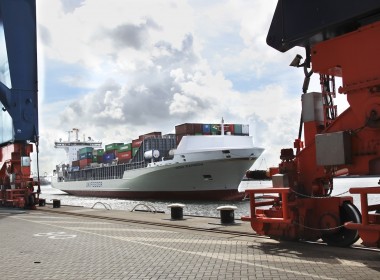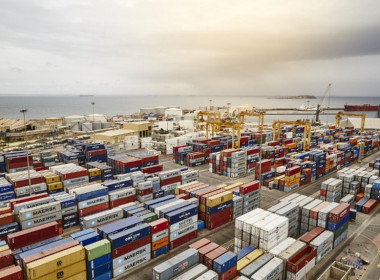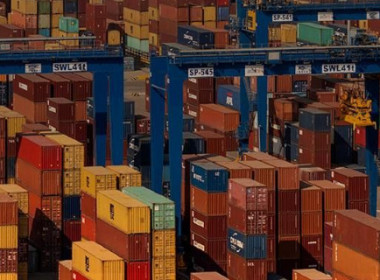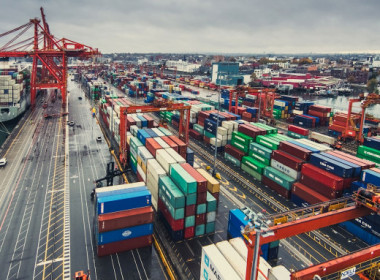COLUMN | Perennial paranoia in the port [Grey Power]

It was some years ago that a friend, looking at a picture of a couple of giant ship-shore container cranes arriving in a port aboard a barge, observed that their sinister silhouette resembled that of the fearsome giant Martian “tripods” that had been depicted in the latest filmed derivation of H.G. Wells’ classic “War of the Worlds”. I have to say that I lacked his imagination, because they looked to me like container cranes.
I recalled that conversation when recently reading about the effusions of political concern being expressed in the US suggesting that the great forests of ship to shore cranes ringing that country’s major ports represented a threat from China, from where many of the things had been manufactured. At any time of the year, there will be several dozen of these gigantic cranes afloat aboard specialist heavy lift carriers en route to their final locations, from the gigantic Zhenhua Port Machinery Company (ZPMC) in China.
There are, of course, other manufacturers in the sector, but the Chinese specialist engineering company can be said to have the lion’s share of the business. And they have been busier than ever, with containerships scaling up and the ship to shore cranes needing to be ever higher and able to reach ridiculous distances from the quayside. And if ZPMC cannot manage to sell you new cranes, they will even jack up your existing fleet to the required height and fit an extra-long jib.
“It would appear to be like using a 2,000-tonne sledgehammer to crack a nut.”
It is in the wake of the Chinese balloon scare, with the heightened paranoia about surveillance from the skies, that this latest scare has emerged about the risk of all these towering cranes gathering data and transmitting it to some malevolent detachment of the People’s Liberation Army (PLA). Admittedly, one would get a very good view of the port and surrounding countryside from the top of these towering structures, but it is quite difficult to think of how this can be a strategic coup for some foreign observer. They would probably gain a more comprehensive scenario from one of the balloons or from passing satellites.
The crane could count the number of boxes it handles, and perhaps tot up the weight, but as a gatherer of important strategic data, it would appear to be like using a 2,000-tonne sledgehammer to crack a nut. It may well be transmitting regular reports to its manufacturer, just as your modern sophisticated car probably communicates engine data to the people who built it, and as modern ships’ machinery transmits data to assist in its maintenance regime.
“Maybe we should also be looking more seriously at folk lurking offshore on jetskis or paddleboards.”
But it is the climate of the times to become increasingly suspicious of anything being manufactured by China, which – let’s face it – manufactures so much of the stuff we all use. There are warnings already being circulated about all manner of equipment, from mobile phones to other electronic devices. I have read supposedly serious articles about these intelligent refrigerators, clever TVs, security cameras, or remote-controlled central heating devices, all of which have the alleged capability of falling under the fell hands of some hostile foreign agency.
A few months ago we were talking with one of our visiting granddaughters, whose phone was sitting beside her and had clearly been listening to our conversation as it started to offer her products based on what we had been talking about. I found that rather scary, but it is a long haul from a phone to a Chinese-built container crane, sucking up intelligence from miles around. But paranoia comes easily in these febrile times.
It is not that much of a stretch from these conspiracy theories to last year’s explosions in the Nordstream pipeline. We are now being asked to believe that the destruction was engineered by a few chaps in a hired yacht, rather than Russian submarines or some other sophisticated undersea devices. If that is all it takes to accomplish such devastating damage, we perhaps should be more concerned than ever about all the pipelines and telecommunication cables wriggling around our shallow shores.
Maybe we should also be looking more seriously at folk lurking offshore on jetskis or paddleboards. Is that paranoia, or sensible suspicion?








